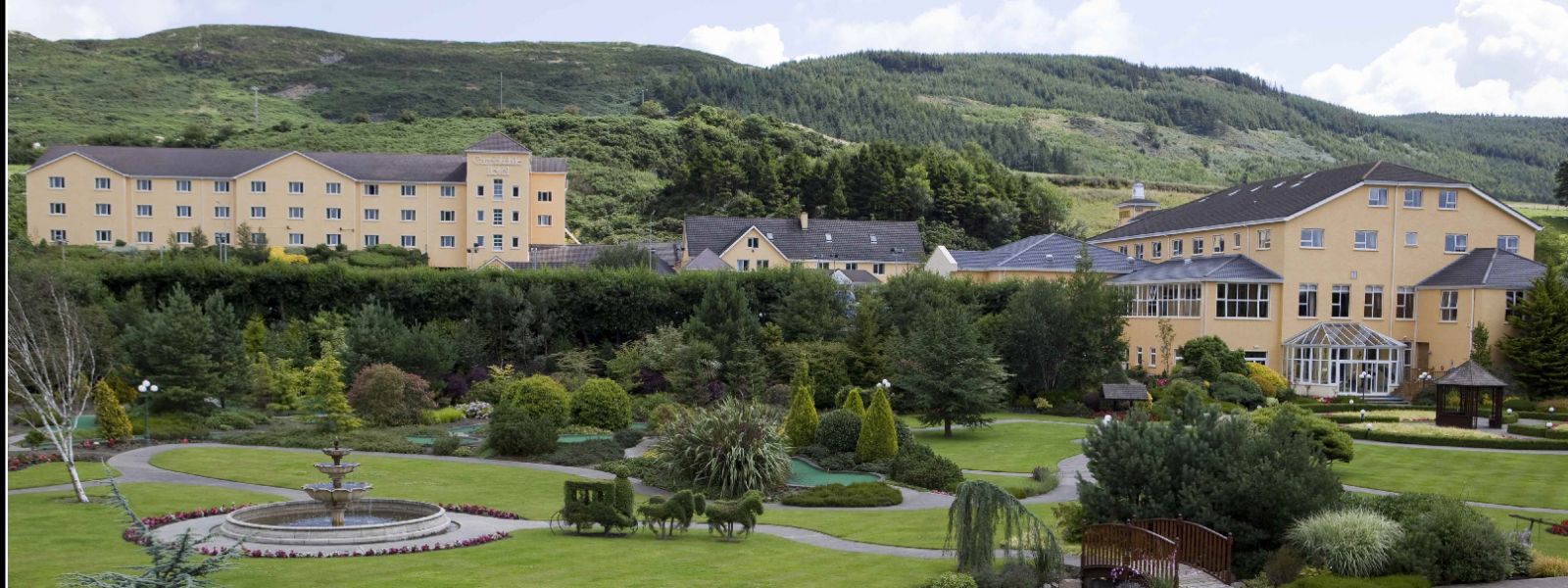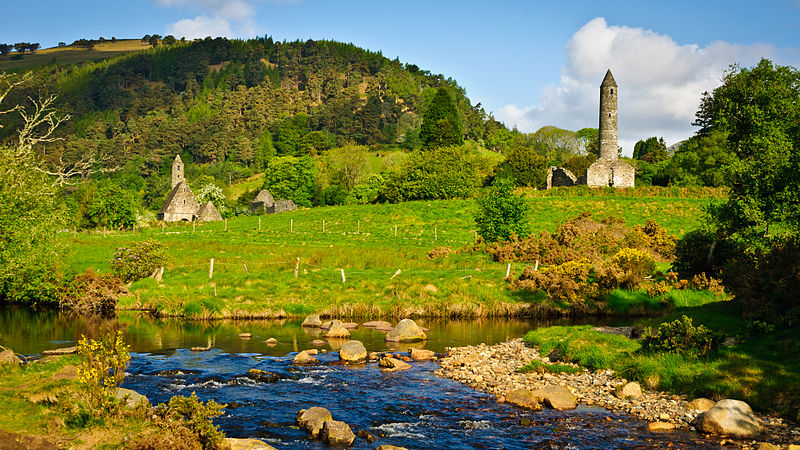Mystical, Magical Ireland – Land of the Druids & Thin Places
Where Heaven and Earth Collide.
July 29 to August 7, 2019
Featuring Speakers, Patricia Lehman Awyan, Suzan Moore and Host, Jane Wardlaw “Heaven and earth are only three feet apart,
“Heaven and earth are only three feet apart,
but in thin places that distance is even shorter.”
~ Celtic Saying
Ancient Celts spoke of hypnotic, mystical places where the veil between heaven and earth is very thin.
In an Irish manuscript, it is written that:
“All who are adepts in Druidical and magical arts are the descendants of the Tuatha De Danaan.”
Who were the legendary Tuatha De Danaan?
The name literally means: “the folk of the god whose mother is Dana.” Like similar legends told worldwide, these fabled Irish gods or ‘fallen angels’ appeared in ancient times, on Beltane, the 1st May… from out of nowhere. Join us on our exploration of the magic of the mysterious Emerald Island, following ancient paths of empowerment, exploring and experiencing the magnetic anomalies and magic of this enchanted world of Ancient Castles, Incredible Round Towers, Faery Glens, Stone Circles, Passage Tombs, and much much more…
Join us on our exploration of the magic of the mysterious Emerald Island, following ancient paths of empowerment, exploring and experiencing the magnetic anomalies and magic of this enchanted world of Ancient Castles, Incredible Round Towers, Faery Glens, Stone Circles, Passage Tombs, and much much more…
Patricia will speak about how ancient symbolism, mythologies, and structures worldwide confirm that ancient civilizations had a vast knowledge about the nature of our reality and the alchemy of how our conscious awareness rises and falls throughout eternal cycling through stages and ages. There is evidence to show that they easily navigated the earth’s geo-magnetic ley lines and were able to harness the electro-magnetic oscillating ‘spins’ from above and below to create magical fields of energy for multi-purpose uses.
Suzan will offer us an enhanced understanding of how the landscape and geological formations can combine to create the magnetic anomalies we’ll encounter, as well as speaking to the cyclic nature of the universe and how it is expressed in the geological layers of our earth.
She will talk about quartz. When quartz is stressed through geo-magnetic events, it is said to have the ability to bend time. Suzan will address these questions and the possibility that the large quantities of quartz found at sacred sites throughout Ireland can help to create electro-magnetic ‘zero-point’ fields.
Jane, Owner and Operator of Hearth Mother Tours, is our on the ground expert for creating a space for unique and special experiences in these magical power places. Jane is also certified in several different “healing modalities” including Cranio-Sacral Therapy, Reiki Master, Psychosomatic Therapy, Huna Kane, Lomi Lomi Massage Therapy and most importantly KCR, CTR, and Postural Energetics.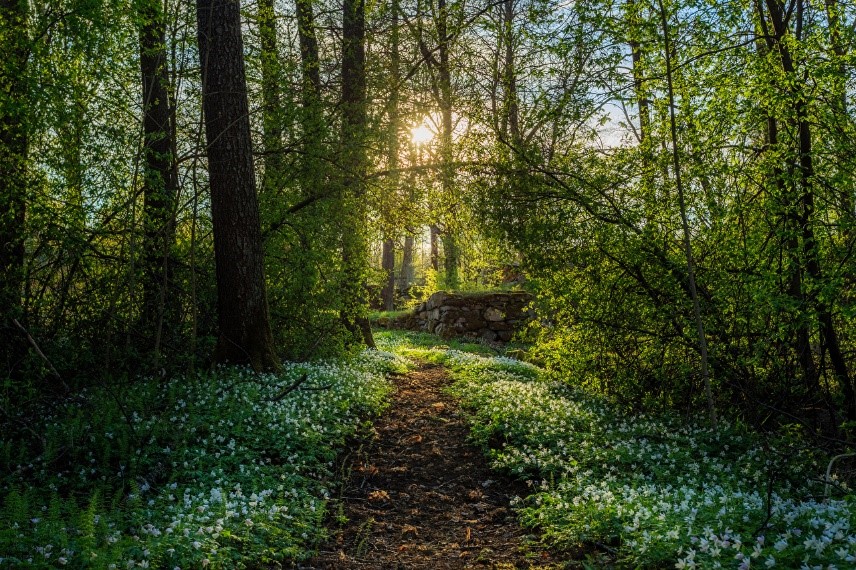
Day 1- Monday, July 29 Arrival and Check-in
Overnight, Airport Hotel (TBA)
Day 2- Tuesday, July 30 National Museum of Ireland, Monasterboice, & Ring of Gullion
We will begin our adventure in the charming city of Dublin with a visit to the National Museum of Ireland and Trinity College, the home of the Book of Kells.  With over 2 million artefacts. the National Museum of Ireland is Ireland’s leading museum institution, with a strong emphasis on national and some international archaeology, Irish history, Irish art, culture, and natural history.
With over 2 million artefacts. the National Museum of Ireland is Ireland’s leading museum institution, with a strong emphasis on national and some international archaeology, Irish history, Irish art, culture, and natural history.  The Book of Kells Exhibition is a must-see on the itinerary of all visitors to Dublin. An illuminated manuscript in Latin, it contains the four Gospels of the New Testament together with various prefatory texts and tables. It was created in a Columban monastery and believed to be dated around 800 AD. It is a masterwork of Western calligraphy and represents the pinnacle of Insular (also known as Hiberno-Saxon) illumination. It is also widely regarded as Ireland’s finest national treasure.
The Book of Kells Exhibition is a must-see on the itinerary of all visitors to Dublin. An illuminated manuscript in Latin, it contains the four Gospels of the New Testament together with various prefatory texts and tables. It was created in a Columban monastery and believed to be dated around 800 AD. It is a masterwork of Western calligraphy and represents the pinnacle of Insular (also known as Hiberno-Saxon) illumination. It is also widely regarded as Ireland’s finest national treasure. After lunch, we will depart Dublin and travel north to visit Monasterboice, where will make a short stop to experience the first Round Tower of our journey and the ancient “High Crosses”.
After lunch, we will depart Dublin and travel north to visit Monasterboice, where will make a short stop to experience the first Round Tower of our journey and the ancient “High Crosses”.
Round Towers as Electromagnetic Energy Transmitters & Receivers
Their Irish name for Round Tower is Cloigtheach which literally means bell house.
There are 65 towers around Ireland in various degrees of survival, 13 of which are still standing intact with conical roof tops in place. why on earth were the doors usually built at least 10 feet above ground level, similar to so many pyramids in Egypt? Scientist, Philip Callahan proposes these towers were built to store and transmit electromagnetic energy from the earth and skies.
(Philip S. Callahan, Ph. D., schooled as an entomologist, was stationed in Ireland as a radio technician during World War II. He has written two books dealing specifically with his discoveries there of the seemingly magical properties of the ancient Irish round towers and of certain rocks and rock powders. Titled Nature’s Silent Music and Paramagnetism—Rediscovering Nature’s Secret Force of Growth) The round towers have been found to have aspects which give them metaphysical properties. Made from paramagnetic stone such as mica schist, sandstone and limestone, they resonate positively in a magnetic field and help to energize its environment.
The round towers have been found to have aspects which give them metaphysical properties. Made from paramagnetic stone such as mica schist, sandstone and limestone, they resonate positively in a magnetic field and help to energize its environment.
Enrichment of Body, Mind and Spirit, as well as Agricultural Benefits
Callahan has described them as paramagnetic antennas that collect and focus beneficial cosmic energies and direct them into surrounding soil. The spherical energy field of enhanced magnetism around them stimulates biological processes and enhances the health, vitality and well-being of plants and animals in surrounding areas. Like Egyptian Obelisks, they are positioned on Earth energy points, and act as acupuncture needles for the earth, drawing down the beneficial energies into the soil. Their reported effects are to assist the percolation of water into the soil, enhancing all agricultural processes.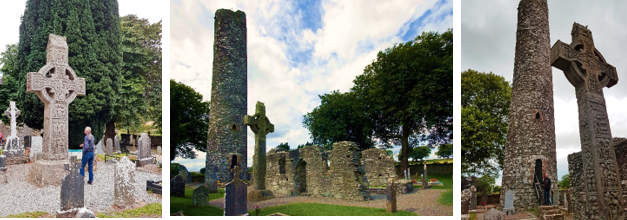 Philip Callahan links the mapping of the Irish Round Towers to the constellation of Draco—and believes they provide a star map of the Northern Hemisphere night sky of circumpolar stars around the December Solstice.
Philip Callahan links the mapping of the Irish Round Towers to the constellation of Draco—and believes they provide a star map of the Northern Hemisphere night sky of circumpolar stars around the December Solstice.
A short drive will take us into the Ring of Gullion which is designated as an area of outstanding natural beauty, where we will enjoy our Welcome Dinner and first taste of Irish hospitality in our hotel for two nights. 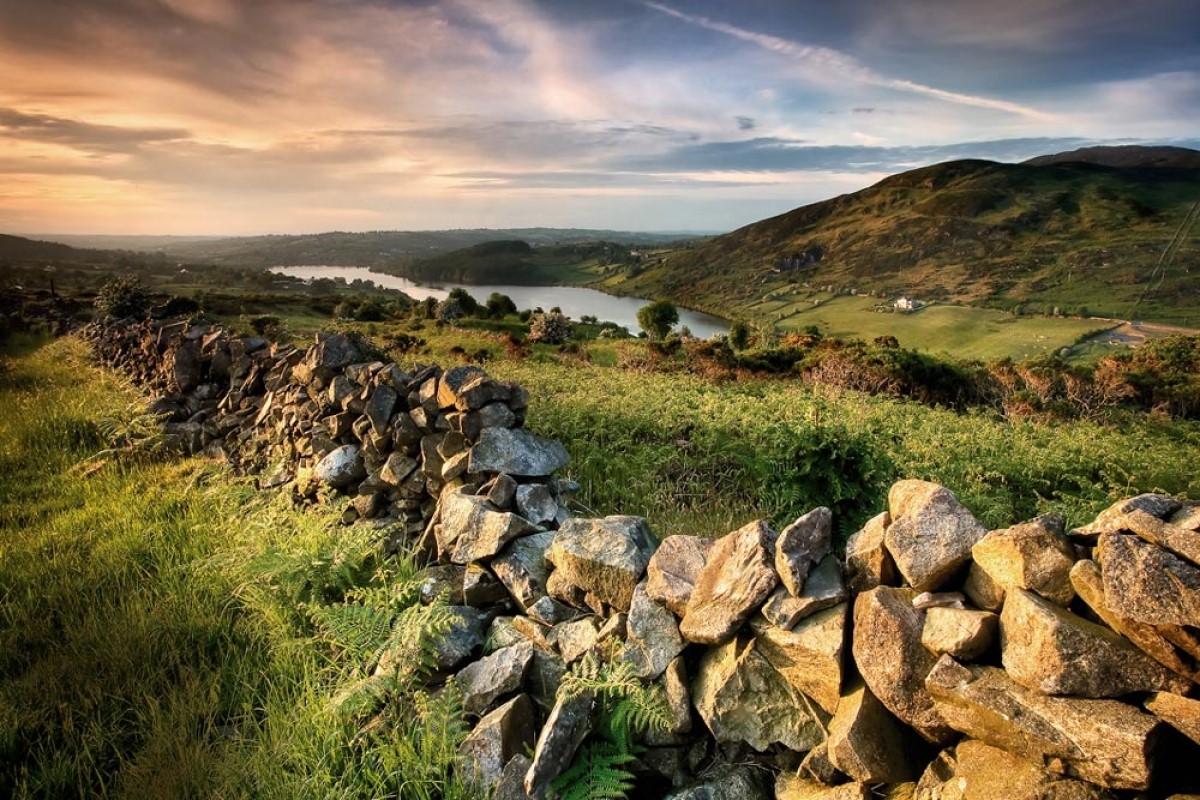
We’ll be staying at the Luxurious Carrickdale Hotel & Spa in Dundalk,one of the most renowned hotels in Co Louth. Surrounded by the spectacular Cooley Mountains & Slieve Gullion, their award winning Serenity spa provides a sanctuary of calm and tranquility inspired by its peaceful location with uninterrupted views from the outdoor hot tub of the hotels’ amazing gardens and views of the Mourne, Cooley & Sleive Gullion Mountains as a backdrop.
Overnight, Carrickdale Hotel & Spa, Dundalk (B,D)
Day 3 – Wednesday, July 31 Newgrange, Knowth, Dowth & Hill of Tara on Eve of the New Moon
Today we will experience the powerful energy of the sacred Boyne Valley. We will visit three ancient sites, that have been dated to the Neolithic period of at least 3200 BC. Each site was carefully constructed to align with the sun, and we can experience the energy as the ancients did as we enter these sites.
Entering the Womb at Newgrange on the Eve of the New Moon
The perfect day to set our intentions for our journey and for our own transformational journeys. As we enter New Grange, and other ‘passage tombs’ we’ll have the opportunity to nurture our own seeds for new beginnings that can be birthed from these wombs of unlimited potentials.
At Newgrange we will view the enormous stones etched with ancient art that surround the temple. At the winter solstice the sun rises in perfect alignment casting a beam of light through the entrance into the main chamber. Also, believed by some to be aligned with the feminine constellation of Cygnus, the interior chamber of this incredible structure has been tested to resonate to the frequency of 110 Hz. Archeo-acoustic researchers cite other places worldwide, such as the Hypogeum at Malta, that also resonate to this frequency known for its ability to alter consciousness, allowing for enhanced right brain activity. 110 Hz is known to represent the human pitch and Buddhists and Hindus chant their mantras in this frequency. It also generates power in women’s ovaries basically effecting the stomach. Next, we’re off to go on to the site of Knowth, which includes a large Neolithic passage mound, estimated to date to 3200 BC, and 17 smaller satellite structures that some believe are tombs. Ancient Kings once ruled from this area.
Next, we’re off to go on to the site of Knowth, which includes a large Neolithic passage mound, estimated to date to 3200 BC, and 17 smaller satellite structures that some believe are tombs. Ancient Kings once ruled from this area.
The passages are independent of each other, leading to separate burial chambers. The eastern passage arrives at a cruciform chamber, not unlike that found at Newgrange, which contains three recesses and basin stones into which the cremated remains of the dead were placed. The right-hand recess is larger and more elaborately decorated with megalithic art than the others, which is typical for Irish passage graves of this type. The western passage ends in an undifferentiated chamber, which is separated from the passage by a sill stone. Many of the motifs are typical: spirals, lozenges and serpentiform. However, the megalithic art at Knowth contains a wide variety of images, such as crescent shapes. Much of this artwork was carved on the backs of the stones. Were these stones reused from an older site?
Many of the motifs are typical: spirals, lozenges and serpentiform. However, the megalithic art at Knowth contains a wide variety of images, such as crescent shapes. Much of this artwork was carved on the backs of the stones. Were these stones reused from an older site?
Dowth is the third of these sites. Unlike Newgrange and Knowth, Dowth has not been independently dated, but its features align it with the other passage tombs which date from between approximately 3200 and 2900 BC. The cairn or tumulus is about 280 ft in diameter and 50 ft high, and surrounded by large kerbstones, some of which are decorated. Quartz was found fallen outside the kerbing, suggesting that the entrance to this tomb was surrounding by glittering white, as at Newgrange. Three stone-lined passages lead into the mound from the west. Dowth shares a special solar celebration with neighboring Newgrange during the Winter Solstice. From November to February the rays of the evening sun reach into the passage and then the chamber of Dowth South. During the winter solstice the light of the low sun moves along the left side of the passage, then into the circular chamber, where three stones are lit up by the sun. The convex central stone reflects the sunlight in to a dark recess, lighting up the decorated stones there. The rays then recede slowly along the right side of the passage and after about two hours the sun withdraws from Dowth South.
Dowth shares a special solar celebration with neighboring Newgrange during the Winter Solstice. From November to February the rays of the evening sun reach into the passage and then the chamber of Dowth South. During the winter solstice the light of the low sun moves along the left side of the passage, then into the circular chamber, where three stones are lit up by the sun. The convex central stone reflects the sunlight in to a dark recess, lighting up the decorated stones there. The rays then recede slowly along the right side of the passage and after about two hours the sun withdraws from Dowth South.
HILL OF TARA – SEAT OF POWER
From here we will make a short journey to the powerful hill of Tara, one of the most venerated places in early Ireland. Tara is one of the largest Celtic monuments in Europe. In ancient Celtic spirituality and mythology, Tara was revered as a dwelling place of the gods and, according to tradition, was the seat of the High King of Ireland.
142 kings are said to have reigned from the Hill of Tara, known as Temair in gaeilge, from prehistoric times onward. Temair was known to be the sacred place of dwelling for the gods, and was the entrance to the otherworld. Legend has it that St Patrick came here to confront the ancient pagan religion at its most powerful site. The most prominent earthworks within are the two linked enclosures, a double-ditched ring fort and ring barrow known as Teach Chormaic (Cormac’s House) and the Forradh or Royal Seat. In the middle of the Forradh is a standing stone, which is believed to be Ireland’s ancient coronation stone- the Lia Fáil or Stone of Destiny at which the High Kings were crowned. It is a place for anyone to take a step onto a new path of Empowerment.
The most prominent earthworks within are the two linked enclosures, a double-ditched ring fort and ring barrow known as Teach Chormaic (Cormac’s House) and the Forradh or Royal Seat. In the middle of the Forradh is a standing stone, which is believed to be Ireland’s ancient coronation stone- the Lia Fáil or Stone of Destiny at which the High Kings were crowned. It is a place for anyone to take a step onto a new path of Empowerment.
According to legend, the stone would scream if a series of challenges were met by the would-be king. It is said that at his touch the stone would let out a screech that could be heard all over Ireland.
Some say that it was only one of four stones positioned at the cardinal directions on Tara – and it is interesting to note that the Hall of Tara, the ancient political centre of Ireland, is aligned north-south.A huge temple measuring 170 metres and made of over 300 wooden posts, was discovered recently at Tara.
After the powerful energy of this day, we will return to our hotel for dinner. Overnight, Carrickdale Hotel & Spa, Dundalk (B,D)
Day 4 – Thursday, August 1 Hill of the Witch & Carrowkeel Cairn – Day of the New Moon
Carrying on the energy of the New Moon at 4:12 AM, we will be visiting one of the four major passage tombs of Ireland. After breakfast, we will depart for Loughcrew to visit the magnificent cairns also known as the Hill of the Witch. Loughcrew or Loch Craobh, meaning “lake of the tree”, is an area of great historical importance near Oldcastle, County Meath, Ireland. It is home to a group of megalithic tombs dating back to the 4th millennium BC, which sit on top of a range of hills. The hills and tombs are the highest point in Meath and home of one of the most significant passage tomb sites in Ireland
These hills and the tombs themselves are together known as Slieve na Calliagh or Sliabh na Caillí, meaning “mountain of the Cailleach”, the divine hag or witch of Irish mythology. Legend has it that the monuments were created when a giant witch, striding across the land, dropped her cargo of large stones from her apron. A unique style of megalithic petroglyphs are seen there, including lozenge shapes, leaf shapes, as well as circles, some surrounded by radiating lines.
A unique style of megalithic petroglyphs are seen there, including lozenge shapes, leaf shapes, as well as circles, some surrounded by radiating lines.
In 1980 Irish-American researcher Martin Brennan discovered that Cairn T in Carnbane East is directed to receive the beams of the rising sun on the spring and autumnal equinox – the light shining down the passage and illuminating the art on the backstone. Then we will travel to the Carrowkeel Cairn near Sligo. The monuments were built in the 4th millennium BC, during the Neolithic era and are considered one of the “big four” passage tomb sites in Ireland.
Then we will travel to the Carrowkeel Cairn near Sligo. The monuments were built in the 4th millennium BC, during the Neolithic era and are considered one of the “big four” passage tomb sites in Ireland.
After another powerful day for seeding new beginnings, we’ll relax and enjoy a Scottish meal together.
Overnight, To be Announced (B,D)
Day 5 – Friday, August 2 County Donegal: Beltany Stone Circle and Grianan Aillighand the Mystical Mt. Errigal
Today we explore the magical County Donegal. According to geologists, Donegal is one of the most complex areas in Ireland in terms of its geology. It is, on the other hand, one of the best studied. The Gweebarra fault, which was carved through granite rock by glacial erosion, is one of the key geological features of the county.
This fault line was formed as part of the earth movement that led to the Caledonian mountains, and the fault continues under the Atlantic and forms another diagonal rift through Loch Ness, Loch Lochy and Loch Long in the Scottish Highlands. These enchanted places, noted for their ‘geopathic stress’ zones, are powerful areas where the veil is thin and legends of fairies, and magical happenings are common.
These enchanted places, noted for their ‘geopathic stress’ zones, are powerful areas where the veil is thin and legends of fairies, and magical happenings are common.
Beltany is a Bronze Age stone circle just south of Raphoe town in County Donegal, Ireland. It dates from 2100-700 BC., however, there is evidence that it may also have been the sacred site of Neolithic monuments.
The enigmatic Beltany Stone Circle is situated on the summit of Tops Hill, the anglicized gaelic word meaning ‘the lighting of a ceremonial torch’. Several stones are cupmarked. One in particular, the triangle stone on NE is decorated with circular incisions or cup marks visible to naked eye. Other stones have what appears to be replicated star constellations. This site is associated with marking the agricultural Celtic year – the summer and winter Solstices and Equinox. The Celtic Year was celebrated in 4 stages – Beltaine (May), Samhain (November) and Imbolg (February) and Lughnasa (August). Beltany may be linked to marking both sunrise and sunset at these important ceremonial events and may also have a lunar orientation.
This site is associated with marking the agricultural Celtic year – the summer and winter Solstices and Equinox. The Celtic Year was celebrated in 4 stages – Beltaine (May), Samhain (November) and Imbolg (February) and Lughnasa (August). Beltany may be linked to marking both sunrise and sunset at these important ceremonial events and may also have a lunar orientation. Next we’re off to Grianan Ailligh, a legendary place of power said to have been built by ancient gods. The ring fort was known as the Sun Temple and was held sacred. Traces of ancient earthworks, dating to the early Iron Age, surround the fort, enclosing an area of about 5 acres. Surrounding the stone fort are three concentric low stone walls of mica schist, which formed part of the original fortification of the fort. Between the two outer banks on the south side of the hill, you will find a formerly covered spring well which is dedicated to St. Patrick.
Next we’re off to Grianan Ailligh, a legendary place of power said to have been built by ancient gods. The ring fort was known as the Sun Temple and was held sacred. Traces of ancient earthworks, dating to the early Iron Age, surround the fort, enclosing an area of about 5 acres. Surrounding the stone fort are three concentric low stone walls of mica schist, which formed part of the original fortification of the fort. Between the two outer banks on the south side of the hill, you will find a formerly covered spring well which is dedicated to St. Patrick.
Another highlight of County Donegal is the Mystical Mt. Errigal which contains the highest peak in the county. Revered by the Druids, it was the destination of many ancient Pilgrimages. Errigal is also the most southern, steepest and highest of the mountain chain, called the “Seven Sisters” by locals.Due to its quartz foundation Mt Errigal reflects and glows the most magnificent red & amber tones, and is especially well known for the pinkish glow of its quartzite in the setting sun. She is quite unlike any other mountain in Ireland.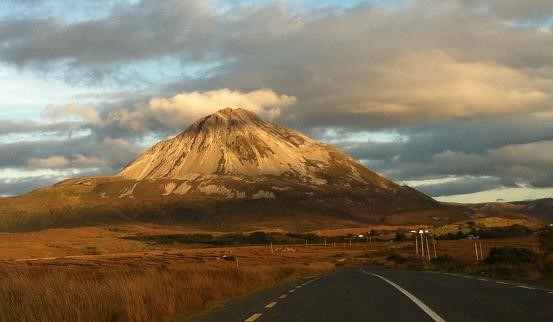 Overnight, To be announced
Overnight, To be announced
Day 6 – Saturday, August 3 Clonmacnoise and Lough Gur Stone Circle
The monastery of Clonmacnoise or Cluain Mhic Nóis, meaning “Meadow of the Sons of Nós”, was founded in 544 by St. Ciarán. The strategic location of the monastery helped it become a major centre of religion, learning, craftsmanship, and trade by the 9th century and together with Clonard it was the most famous in Ireland, visited by scholars from all over Europe.
A walk amongst the peaceful stone ruins of this famous place will conjure images of saints and scholars of Ireland’s renowned Golden Age of learning. Many historical manuscripts, including the 11th century Annals of Tighernach and the 12th century Book of the Dun Cow, were written here. Here we’ll be able to see three high crosses, a cathedral, seven churches and two round towers. The beautifully preserved structures of Clonmacnoise Cathedral, Temple Doolin, Temple Hurpan and Temple Melaghlin all offer an authentic sense of the history of Ireland.
Here we’ll be able to see three high crosses, a cathedral, seven churches and two round towers. The beautifully preserved structures of Clonmacnoise Cathedral, Temple Doolin, Temple Hurpan and Temple Melaghlin all offer an authentic sense of the history of Ireland.
Near the Chapel of Clonfinlough at Clonmacnoise there are several limestone boulders, one of which is called the Fairy’s or Horseman’s Stone. It has many cup-shaped hollows, crosses, daggers, and a pair of human feet possibly connected with the inauguration of Gaelic rulers.
It was one of two main ecclesiastical centres of Ireland along with Armagh.  According to Callahan’s star map, Clonmacnoise is at the central position mirroring our pole star, Polaris. Armagh is at the position that corresponds to the ecliptic pole and is currently the ‘seat pf power’ of Irish ecclesiastical rule today. The placing shows that the builders knew not only that the Earth was round, but about the circular precession of the Earth around an ecliptic centre of the sky.
According to Callahan’s star map, Clonmacnoise is at the central position mirroring our pole star, Polaris. Armagh is at the position that corresponds to the ecliptic pole and is currently the ‘seat pf power’ of Irish ecclesiastical rule today. The placing shows that the builders knew not only that the Earth was round, but about the circular precession of the Earth around an ecliptic centre of the sky.
Remarkably, its shows a cross cultural ancient knowing that it is the precession of Equinoxes that determines our state of consciousness or ‘connection with God’ and our perception of time and space. As above, so below…
Next, we’re off the see Lough Gur Stone Circle, what locals call the oldest, at 4100 years BC and largest stone circle in Ireland. The largest stone is Rannach Chruim Duibh, and is over 4m high and weighs 40 tons. The entrance of the circle is aligned with the rising sun at the Summer Solstice. The entrance stones are matched by a pair of equally impressive slabs on the southwest side, whose tops slope down towards each other to form a v-shape. The stones are contiguous rather than free-standing, and the surrounding bank makes it look more like a form of henge monument than a conventional stone circle and could very well have been used for ceremonial purposes.
The stones are contiguous rather than free-standing, and the surrounding bank makes it look more like a form of henge monument than a conventional stone circle and could very well have been used for ceremonial purposes. The whole area surrounding Lough Gur is cloaked in myth and mystery and it is said that the ghost of the last Earl of Desmond still rides his white charger with silver shoes out of the lake every seven years. Evidence of continuous human habitation over the last 6000 years became evident when the lake was drained and thousands of artifacts, flints, axes and spearheads, fragments of Beaker pottery and an impressive bronze shield were found on the newly exposed shoreline.
The whole area surrounding Lough Gur is cloaked in myth and mystery and it is said that the ghost of the last Earl of Desmond still rides his white charger with silver shoes out of the lake every seven years. Evidence of continuous human habitation over the last 6000 years became evident when the lake was drained and thousands of artifacts, flints, axes and spearheads, fragments of Beaker pottery and an impressive bronze shield were found on the newly exposed shoreline.
If we walk a short distance to the north-north east of the main stone circle, we will find a second smaller circle, also constructed of large stones. To the north of this is a large leaning standing stone.
Overnight, To be announced
Day 7 – Sunday, August 4 Dingle Peninsula and the Beehive Huts
Today we will travel around the Dingle Peninsula and experience some of the most incredible views in Ireland. “When Irish eyes are smiling, sure ’tis like a morn in spring. In the lilt of Irish laughter, you can hear the angels sing.” We will stop to explore some of the Ancient Beehive huts along the way. A clochán, or beehive hut, is a dry-stone hut with a corbelled roof, commonly associated with the south-western Irish seaboard. The precise construction date of most of these structures is unknown.
We will stop to explore some of the Ancient Beehive huts along the way. A clochán, or beehive hut, is a dry-stone hut with a corbelled roof, commonly associated with the south-western Irish seaboard. The precise construction date of most of these structures is unknown.
According to archaeologist Lloyd Laing, “There can be little doubt that these buildings belong to a long-established Celtic tradition, though there is at present no direct evidence to date the surviving examples before c.AD 700”, and he considers most fully intact structures to date after the 12th century or later. There are 417 recorded dry-stone structures, 19 souterrains and 18 standing stones in the area
There are 417 recorded dry-stone structures, 19 souterrains and 18 standing stones in the area
Overnight, same hotel as Saturday night.
Day 8 – Monday, August 5 Drombeg Stone Circle – The Druid’s Altar and Clonmakiltie
Today, we will visit the powerful Drombeg Stone Circle in County Cork, known as the Druid’s Altar. For 3 days starting at Winter Solstice, the sun disappears behind the hill on the horizon and then reappears in the lower valley. At the point of reappearance, the stone circle is dramatically illuminated.
THE DANCE OF LIGHT AND SHADOW The structure consists of 17 tightly packed stones and as a ‘Cork-Kerry’ type stone circle, it contains two taller entrance stones placed opposite a recumbent axial stone. Its axis is orientated south west towards the setting sun.
The structure consists of 17 tightly packed stones and as a ‘Cork-Kerry’ type stone circle, it contains two taller entrance stones placed opposite a recumbent axial stone. Its axis is orientated south west towards the setting sun. Her favorite stone circle, Jane will lead us in a ceremony here.
Her favorite stone circle, Jane will lead us in a ceremony here.
We will go to the quaint town of Clonmakiltie for lunch and perusing the shops. The Cathedral there it is truly magnificent for those who wish to visit. Overnight, Castlemartyr Hotel (or similar)
Overnight, Castlemartyr Hotel (or similar)
Day 9 – Tuesday, August 6 Kildare Cathedral, Holy Well and Round Tower and Glendalough
This morning we will travel to Kildare to pay our respects to St. Bridgid, a Druidic Priestess, and visit the Cathedral and Holy well. Cormac’s Glossary, written in the 10th century by Christian monks, says that Brigid was “the goddess whom poets adored” and that she had two sisters: Brigid the healer and Brigid the smith. This suggests she may have been a triple deity. She is considered the patroness of poetry, smithing, medicine, arts and crafts, cattle and other livestock, sacred wells, serpents (in Scotland) and the arrival of early spring. In the Christian era, nineteen nuns at Kildare tended a perpetual flame for the Saint, which is widely believed to be a continuation of a pre-Christian practice of women tending a flame in her honor. She is the goddess of all things perceived to be of relatively high dimensions such as high-rising flames, highlands, hill-forts and upland areas; and of activities and states conceived as psychologically lofty and elevated, such as wisdom, excellence, perfection, high intelligence, poetic eloquence, craftsmanship (especially blacksmithing), healing ability, druidic knowledge and skill in warfare. In the living traditions, whether seen as goddess or saint, she is largely associated with the home and hearth and is a favorite of both Polytheists and Catholics.
She is the goddess of all things perceived to be of relatively high dimensions such as high-rising flames, highlands, hill-forts and upland areas; and of activities and states conceived as psychologically lofty and elevated, such as wisdom, excellence, perfection, high intelligence, poetic eloquence, craftsmanship (especially blacksmithing), healing ability, druidic knowledge and skill in warfare. In the living traditions, whether seen as goddess or saint, she is largely associated with the home and hearth and is a favorite of both Polytheists and Catholics. Her feast day is 1 February, which was originally a pagan festival called Imbolc, marking the beginning of spring.
Her feast day is 1 February, which was originally a pagan festival called Imbolc, marking the beginning of spring.
The original stone Cathedral was built by Ralph De Bristol, Bishop of Kildare in 1223 AD. The modern Cathedral was almost completely rebuilt in the late 19th Century. The grounds of the cathedral contain a number of fascinating links to the early history of the site including a 110 foot 12th Century round tower, the second highest in Ireland, a Celtic cross, and St. Brigid’s Fire Temple, an ancient oratory where, according to local lore, St. Brigid’s Fire was kept alight. The interior of the cathedral has a collection of carvings ranging from early Christian to Norman and later.
Constructed from Wicklow granite and local limestone, the Round Tower at Kildare is one of only two remaining towers that can be climbed—which can be done for a small fee when a guide is present. Inside there are a series of long ladders between wooden platforms. The ladders and platforms were replaced in 1874, but are still very sturdy and in good repair. Aside from the spectacular view of Kildare and the surrounding countryside, it is interesting to see how each wooden floor is supported by projecting corbels, how the inside construction of windows can differ from the outside, and while the conical cap no longer exists, there remains a good example of the corbelling technique.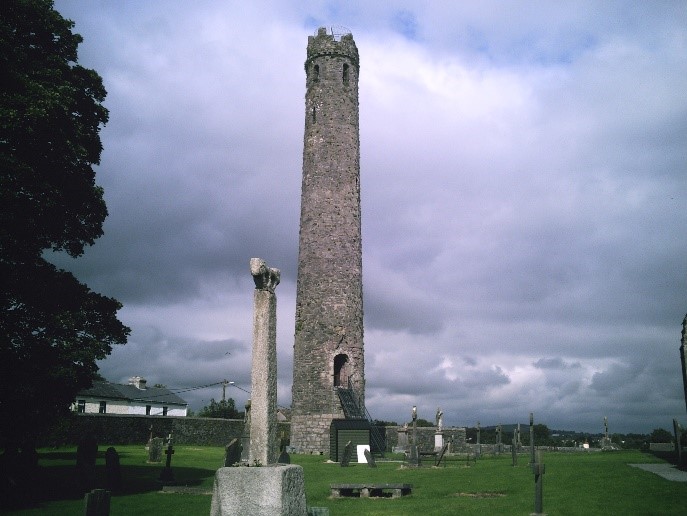 Next, we’re off to Glendalough or Gleann Dá Loch, meaning “Valley of two lakes”, a magical glacial valley in County Wicklow, renowned for an Early Medieval monastic settlement founded in the 6th century by St Kevin. The valley was formed during the last ice age by a glacier which left a moraine across the valley mouth. The Poulanass river, which plunges into the valley from the south, created a delta, which eventually divided the original lake in two.
Next, we’re off to Glendalough or Gleann Dá Loch, meaning “Valley of two lakes”, a magical glacial valley in County Wicklow, renowned for an Early Medieval monastic settlement founded in the 6th century by St Kevin. The valley was formed during the last ice age by a glacier which left a moraine across the valley mouth. The Poulanass river, which plunges into the valley from the south, created a delta, which eventually divided the original lake in two.
The Gateway to the monastic city of Glendalough is one of the most important monuments, now totally unique in Ireland. It was originally two-storeyed with two fine, granite arches. The antae or projecting walls at each end suggest that it had a timber roof. Inside the gateway, in the west wall, is a cross-inscribed stone. This denoted sanctuary, the boundary of the area of refuge.
The largest and most imposing of the buildings at Glendalough, the cathedral, had several phases of construction, the earliest, consisting of the present nave with its antae. The large mica-schist stones which can be seen up to the height of the square-headed west doorway were re-used from an earlier smaller church. A few metres south of the cathedral an early cross of local granite, with an unpierced ring, is commonly known as St. Kevin’s Cross. The Round tower, built of mica-slate interspersed with granite, originally had six timber floors, connected by ladders. The conical roof was rebuilt in 1876 using the original stones. The four stories above entrance level are each lit by a small window; while the top story has four windows facing the cardinal compass points.
The Round tower, built of mica-slate interspersed with granite, originally had six timber floors, connected by ladders. The conical roof was rebuilt in 1876 using the original stones. The four stories above entrance level are each lit by a small window; while the top story has four windows facing the cardinal compass points.
The Priests’ House is a small Romanesque building, with a decorative arch at the east end. It gets its name from the practice of interring priests there in the 18th and 19th centuries. Its original purpose is unknown although it may have been used to house relics.
We’ll enjoy our Farewell Dinner and check into our rooms at our Hotel in Dublin near the airport for ease of departure on Wednesday morning. Overnight Dublin (B,D)
Day 10 – Wednesday, August 7 Departure (B)
Now sweetly lies old Ireland
Emerald green beyond the foam,
Awakening sweet memories,
Calling the heart back home.
Our itinerary is flexible to allow for the natural flow of energy created by the group’s interest and direction by spirit. There will be surprises along the way and stops that we will make each day to special places, often known only to the locals, and untouched by the development of commerce. There may be changes due to circumstances beyond our control.
Copyright © 2018 The Khemit School of Ancient Mysticism, All rights reserved.
Speakers on the Journey:
Patricia Awyan Lehman
Khemitologist, Speaker, Researcher, Explorer, Symbologist, Spiritual & Intuitive Life Counsellor and Artist
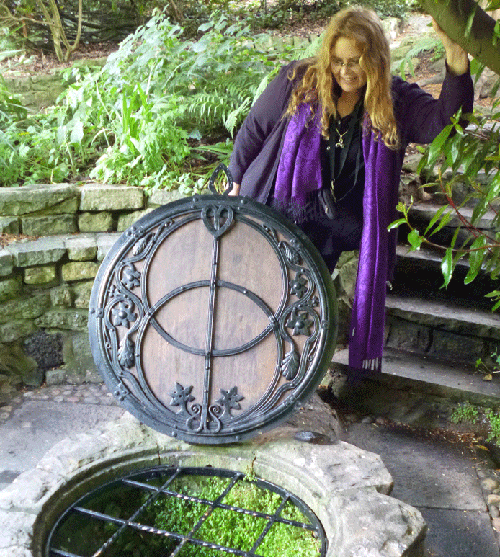 From a very young age, Patricia knew that she would one day be “going home” to Egypt. Having been born with a “need to know”, she has spent much of her life on a personal quest for knowledge, wisdom and spiritual fulfillment. Patricia’s strong and vital connection to Nature and interest in the mystical and physical sciences propelled her into a lifelong study of the ancient mysteries. She is a gifted Intuitive, clairaudient and clairvoyant. As a long time student in metaphysical, spiritual and esoteric subjects and traditions,
From a very young age, Patricia knew that she would one day be “going home” to Egypt. Having been born with a “need to know”, she has spent much of her life on a personal quest for knowledge, wisdom and spiritual fulfillment. Patricia’s strong and vital connection to Nature and interest in the mystical and physical sciences propelled her into a lifelong study of the ancient mysteries. She is a gifted Intuitive, clairaudient and clairvoyant. As a long time student in metaphysical, spiritual and esoteric subjects and traditions,
Patricia’s eclectic spiritual background serves as a strong foundation to support to her work. She became of student of Khemitology after meeting world renowned, Khemitologist, Abd’el Hakim Awyan, on her first trip to Egypt in 2005.
Patricia devotes much of her time to the study and exploration of ancient mysteries, symbolism and mythologies worldwide. She has traveled to sites in Australia, New Zealand, Great Britain, Scotland, France, Spain, Lebanon, Jordan, Peru, Bolivia, India, Cambodia and all over America and Egypt, researching the clues that support the concept of a very advanced civilization, technologically and spiritually, that once spanned the globe possibly tens of thousands of years ago and left a legacy of knowledge and wisdom for us to decipher.
Patricia presents lectures that illustrate how the ancients worldwide, left us a blueprint that maps out the truth of the beauty, perfection and infinite possibilities that exist within and outside every one of us. She will speak about the significance of the symbolism we’ll see throughout our journey, relating it to that of Egypt, India and other indigenous traditions worldwide. Did the ancient Egyptians visit or even migrate to Scotland? Patricia will speak to this, as well as has the two lands are connected by something that is far more powerful.
She will help to hold a space for and lead us on our meditations and offer guidance for your inner journeys on this pilgrimage.
Director
Horus Rising Research and Adventures http://horusrising.com/
Co-Director
The Khemit School of Ancient Mysticism www.khemitology.com
Suzan Moore Geologist
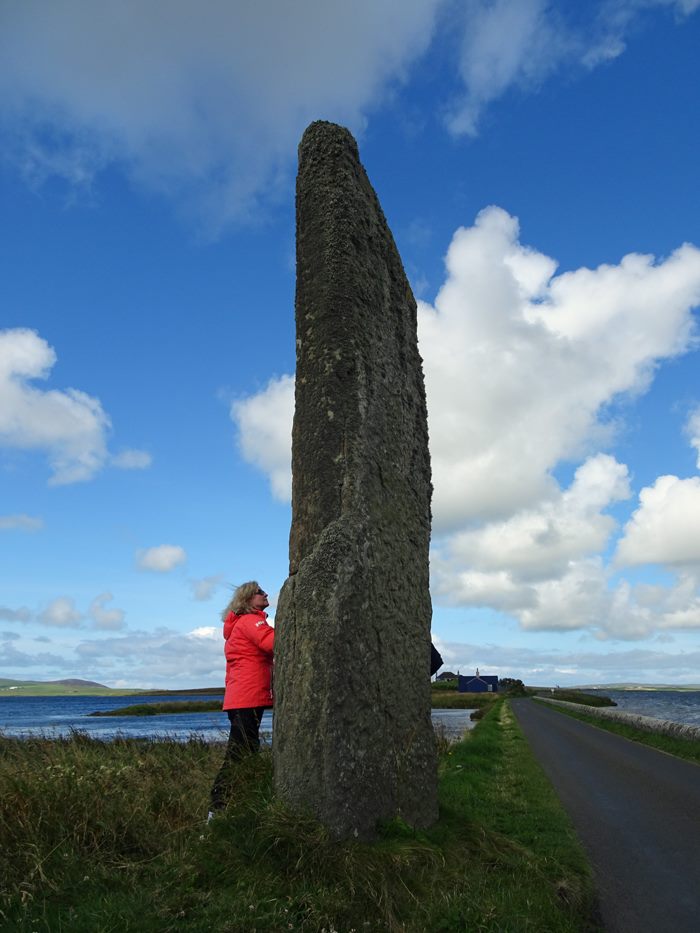 Born and raised on the prairies of Saskatchewan Canada, Suzan developed a keen interest in nature, rocks and stars at an early age. That passion later led her to pursue a Geology degree with a minor in Astronomy. Suzan has been working as a Geologist in Canada for over 40 years. She originally worked in both mining and regional mapping of granites and metamorphic rocks in northern Saskatchewan and the North West Territories. She has been working for many years as a Sedimentological Specialist in the Oil and Gas industry in Calgary Alberta, specializing in the Jurassic of North-Western America.
Born and raised on the prairies of Saskatchewan Canada, Suzan developed a keen interest in nature, rocks and stars at an early age. That passion later led her to pursue a Geology degree with a minor in Astronomy. Suzan has been working as a Geologist in Canada for over 40 years. She originally worked in both mining and regional mapping of granites and metamorphic rocks in northern Saskatchewan and the North West Territories. She has been working for many years as a Sedimentological Specialist in the Oil and Gas industry in Calgary Alberta, specializing in the Jurassic of North-Western America.
She has always had an interest in Ancient Egypt and, since her first visit, returns regularly. After a trip to Peru in 2013 she developed a passion for understanding megalithic structures and the rocks they are carved from which led her to explore their implications in Egypt as well. She is currently trying to incorporate how weathering, time and source of the rocks affect the construction and preservation of many of the megalithic structures.
Suzan offers a unique and fresh perspective on the description, consistency and use of the various types of rocks and materials used in the ancient structures here. She has been working with the Khemit School team for several years and joined them on journeys in Egypt, India, Lebanon, Jordan, Cambodia, Scotland, Peru and Bolivia.
About your Host and Guide:
Jane Wardlaw Owner/ Operator of Hearth Mother Tours
 I have been organizing unique Spiritual Adventures since 2004. Born and raised in Canada I first came to Scotland in 2003 and knew immediately upon setting foot on her soil that I was deeply connected to this land. I was able to trace my family roots, and visit the burial sites of my ancestors, one of whom was a Knight Templar! I now have the privilege of living in Scotland and I want to show you the lands that I have come to know and love. I will take you to visit some of my favourite spots in this magical country, and give you the opportunity to taste some of the special foods that are offered here…. who knows maybe the fairies and other “little people” will allow us a glimpse of their world! I believe that everyone who comes to visit sacred sites does so because Mother Earth is calling them to her, each bringing her a piece of the mosaic of love and compassion she needs to return to her former brilliant light. Therefore, to each person who commits to such a journey, I undertake to provide them with the utmost care and respect I can offer at every step along the way. I love to share the energies of these sites with people that are also deeply connected to our planet.
I have been organizing unique Spiritual Adventures since 2004. Born and raised in Canada I first came to Scotland in 2003 and knew immediately upon setting foot on her soil that I was deeply connected to this land. I was able to trace my family roots, and visit the burial sites of my ancestors, one of whom was a Knight Templar! I now have the privilege of living in Scotland and I want to show you the lands that I have come to know and love. I will take you to visit some of my favourite spots in this magical country, and give you the opportunity to taste some of the special foods that are offered here…. who knows maybe the fairies and other “little people” will allow us a glimpse of their world! I believe that everyone who comes to visit sacred sites does so because Mother Earth is calling them to her, each bringing her a piece of the mosaic of love and compassion she needs to return to her former brilliant light. Therefore, to each person who commits to such a journey, I undertake to provide them with the utmost care and respect I can offer at every step along the way. I love to share the energies of these sites with people that are also deeply connected to our planet.
www.hearthmothertours.com
Total Package Price:
$4,650.00 USD per person sharing a double room
EARLY BIRD SPECIAL: $4,500.00 per person in a double room to the first 4 people that Register with a PAID Deposit.
Single Supplement: will apply if you require sole occupancy for an additional fee of $800.00 USD.
If you would like us to match you up with a roommate we will make every effort to do so, however, if we are unable to find a suitable match, then you will need to pay the extra for single supplement.
Registration Form and Deposit:
Please fill out our Registration Form found at this link: https://khemitology.com/tour-registration/ ![]()
Your reservation is confirmed when you send your non-refundable deposit of $650.00 USD Deposit. PAYMENT IN FULL IS DUE BY MAY 15th 2019
For pricing in GBP (British Pounds) please contact jane@hearthmothertours.com
Included:
- 9 night’s accommodation in 3 or 4 star hotels.
- Breakfast each morning
- Dinner each evening
- All Ground Transport – pick up and drop off at Dublin International Airport
- All Site entry fees
- Tour guide services by Jane Wardlaw
- Patricia Awyan Lehman and Suzan Moore as your Speakers
- All tips
Does Not Include:
- Airfare to and from Glasgow, Scotland
- Meals not mentioned above
- Alcoholic Beverages with meals (you can order these on your own tab)
- Travel Insurance
- Medical Expenses
- Personal Expenses such as Internet access, Phone calls, Laundry service, gifts etc.
For further information – email: jane@hearthmothertours.com
Terms and Conditions:
Reservation and Payment
A non-refundable deposit of $650.00 per person will be required at the time of booking. To insure your reservation, final payment will be due 75 days prior the departure dates from your Country. It is the responsibility of the traveler (or agent) to determine that final payment reaches us on time. Bookings made within 30 days of departure date, will require full and final payment immediately upon booking. No booking will be considered until final deposit is received by the Tour Operator. Instructions for making your payments will be received after submission of your Registration Form.
Cancellation and Refunds:
Deposits of $650.00 are Non-Refundable
Any payments made above the deposit will be refunded as follows:
Cancellation on or after May 15 – 50% of your payments will be refunded
Cancellation on or before May 30 – 40% of your payments will be refunded
Cancellation after June 1, 2019 – including no shows – no refunds available
If we need to cancel due to insufficient numbers your entire fee will be refunded.
Changes
This itinerary is subject to changes in sequence in order to adapt to possible alterations in domestic flight times or other unforeseen circumstances. The content will basically remain the same, barring any unanticipated complications, and will include many delightful “extras” and surprises.
INSURANCE:
We recommend that all participants obtain Travel Insurance. Travel Insured International offers insurance for trip cost, trip cancellation & interruption, and pays for loss due to unforeseen circumstance, death, injury, or illness to you or a member of your family. It also includes coverage for missed connections due to weather, pays for lost deposits due to the financial default of the airline, the tour operator, or cruise line. It pays for baggage delays, travel delays, medical expenses, and emergency assistance.
WAIVER OF RESPONSIBILITY:
By signing up to the tour you agree to our terms, deposit conditions and waiver.
KSAM, its agents and our Tour Facilitators in Scotland have worked diligently to make all of the arrangements for our journey together in Scotland, however, KSAM, its agents and our Tour Facilitators will not be held liable for delays, theft, damage, injury, or any other irregularities that may occur during the course of the journey. We will not be held liable for any changes or delays in airline schedules or missed connections; injury, loss, or damage to persons or property; additional expenses resulting from changes in exchange rates, tariffs, or itinerary; any transportation issues or problems with vehicles utilized on the tour; additional expenses incurred due to illness, weather conditions, protests, war, terrorism, quarantine, or other causes; and losses due to cancellations not subject to our terms and conditions.
Please contact Patricia Awyan @ info@khemitology.com with any questions.

